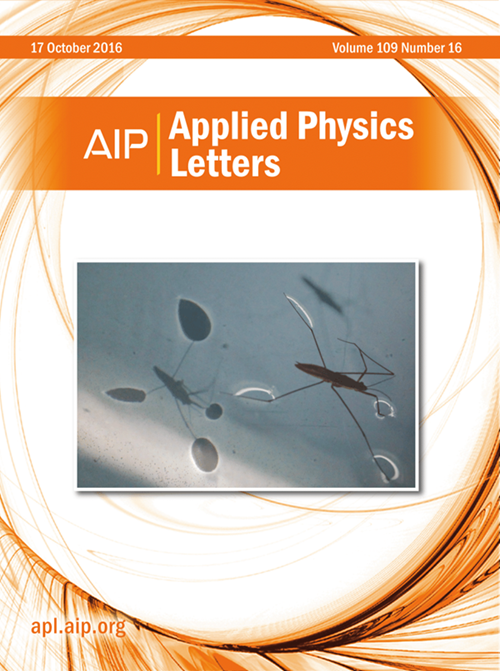Chiral quasi-bound states in the continuum via Brillouin zone folding
IF 3.5
2区 物理与天体物理
Q2 PHYSICS, APPLIED
引用次数: 0
Abstract
Chiral quasi-bound states in the continuum (q-BICs) provide a way to investigate light–matter interactions. Currently, the chiral response is fundamentally constrained by the rapid decay of quality (Q-) factors with symmetry breaking, making the robustness of higher-Q particularly crucial. In this paper, we propose the metasurfaces composed of the double-skeleton-fan unit cells with sixfold rotational symmetry. Moreover, by introducing gap perturbation and scale perturbation, the guided modes originally below the light cone are folded above the light cone through Brillouin zone folding (BZF), enabling the q-BZF-BICs with enhanced Q-factors (Q > 106). Furthermore, by tuning the tilted extrusion parameters, near-perfect circularly polarized light (ellipticity χ = 0.99) is achieved in the parameter space. Notably, the extrinsic (circular dichroism CD = 0.98) and intrinsic chirality (CD = 0.97) are realized through simultaneous breaking of in-plane and out-of-plane symmetries. Chiral metasurfaces enable sensing, lasing, and pharmaceutical applications.通过布里渊区折叠的连续介质中的手性准束缚态
连续介质中的手性准束缚态(q- bic)提供了一种研究光-物质相互作用的方法。目前,手性响应从根本上受到质量(Q-)因子的快速衰减和对称性破缺的限制,这使得高Q的鲁棒性尤为重要。本文提出了由具有六重旋转对称的双骨架-扇形单元胞组成的超表面。此外,通过引入间隙微扰和尺度微扰,将原本位于光锥下方的导模通过布里渊区折叠(BZF)折叠到光锥上方,使Q- BZF- bics具有增强的Q因子(Q >;106)。此外,通过调整倾斜挤压参数,在参数空间中获得了接近完美的圆偏振光(椭圆率χ = 0.99)。值得注意的是,外在(圆二色性CD = 0.98)和内在手性(CD = 0.97)是通过同时打破面内和面外对称性实现的。手性超表面使传感、激光和制药应用成为可能。
本文章由计算机程序翻译,如有差异,请以英文原文为准。
求助全文
约1分钟内获得全文
求助全文
来源期刊

Applied Physics Letters
物理-物理:应用
CiteScore
6.40
自引率
10.00%
发文量
1821
审稿时长
1.6 months
期刊介绍:
Applied Physics Letters (APL) features concise, up-to-date reports on significant new findings in applied physics. Emphasizing rapid dissemination of key data and new physical insights, APL offers prompt publication of new experimental and theoretical papers reporting applications of physics phenomena to all branches of science, engineering, and modern technology.
In addition to regular articles, the journal also publishes invited Fast Track, Perspectives, and in-depth Editorials which report on cutting-edge areas in applied physics.
APL Perspectives are forward-looking invited letters which highlight recent developments or discoveries. Emphasis is placed on very recent developments, potentially disruptive technologies, open questions and possible solutions. They also include a mini-roadmap detailing where the community should direct efforts in order for the phenomena to be viable for application and the challenges associated with meeting that performance threshold. Perspectives are characterized by personal viewpoints and opinions of recognized experts in the field.
Fast Track articles are invited original research articles that report results that are particularly novel and important or provide a significant advancement in an emerging field. Because of the urgency and scientific importance of the work, the peer review process is accelerated. If, during the review process, it becomes apparent that the paper does not meet the Fast Track criterion, it is returned to a normal track.
 求助内容:
求助内容: 应助结果提醒方式:
应助结果提醒方式:


